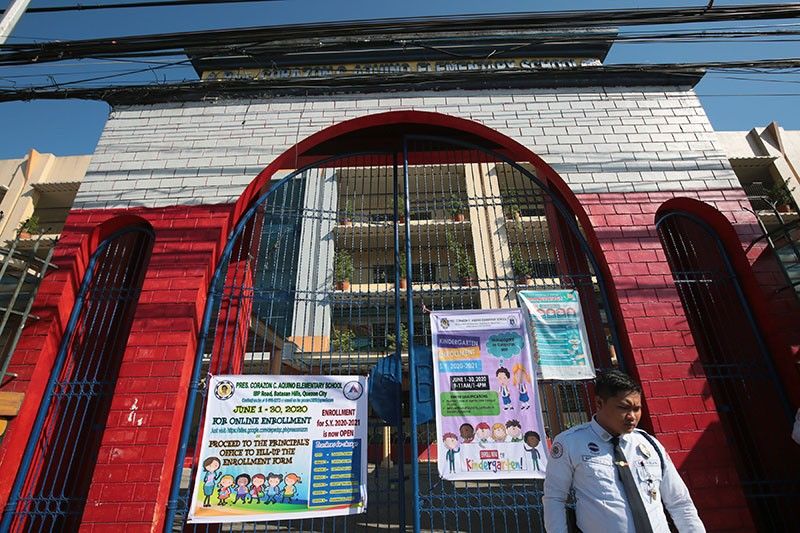Commentary: Digital infrastructure for online learning

This week, many schools around the country have formally started online classes. In the first few days, students and their teachers will be orienting themselves with the various applications needed for effective teaching delivery. Schoolchildren will have to content themselves with meeting new and old classmates in virtual classrooms instead of meeting in playgrounds and cafeterias. More important, schools will now be testing the prospects and limitations of online learning, as nothing of this scale of had ever been implemented before.
Expected birth pangs have emerged as students go into their school orientations. For most working families, online learning is an additional but unavoidable expense, as it requires an additional outlay than the usual tuition and other school fees, such as computer devices and a stable and reliable internet connection.
In fact, in my son’s first day of school, our fixed-line internet connection dropped in the middle of their orientation, requiring us to connect to the internet through mobile data in order to return to his class. Parents will need fast broadband services to ensure that their children will not miss their class activities.
This highlights the surge in demand for more bandwidth that will understandably congest our existing digital infrastructure. No less than the president threatened legal action against local government units if they do not comply with the DICT’s new guidelines to drastically cut, “petty corruption” prone, bureaucratic permits and release by seven days. A problem that has blocked the development of our telecommunications infrastructure since the first cellphones back in the early 90’s causing delays by an average of eight months for each tower project that should take only a few days to construct and operationalize.
This is the actual backdrop of the state of the country’s digital infrastructure, on which it should be clearly apparent that the burden of improving telco services rests not on the leading telcos alone, nor does it rest on the threats of President Rodrigo Duterte. With schoolchildren’s learning outcomes largely dependent on the effective online delivery of instruction, every family has as much stake in improving telco services around the country.
Although the president has offered little policy clarity on his threats to close down and expropriate the leading telcos by December, he has taken serious note of the complaints of the private sector on the impact of government red tape in the building of new towers. With at least 25 required permits at the national and local levels, the leading telcos are only able to build at least 3,000 towers per year. This is the most binding constraint on improving telco services.
But with his stern directive to punish bureaucratic delay and illicit transactions at all levels, this should be taken as a commitment by government that this is a concern that should be resolved together with the telco sector. In fact, the president’s order to report Cabinet officials is worth its weight in gold, as this constitutes as a direct reporting mechanism to the president himself on instances that government has been the cause in delaying tower construction.
There is very wide berth for improvement in the telco sector. The country’s internet speed trails Côte d’Ivoire, Nepal and Haiti, countries which had undergone fairly recent political upheavals and natural disasters. These countries’ Gross Domestic Product per capita are at worst a quarter (Haiti) of our own GDP per capita or at best half (Côte d’Ivoire) of ours.
In ASEAN, the Philippines has lower internet speeds than Vietnam and Laos, both of which have lower GDP per capita than us. These indicate that despite unprecedented economic growth in the last two decades, the country’s digital infrastructure has not developed consistent with economic growth.
The imperative for government and the telco sector to work together cannot be understated. Eight million students will be starting their classes within the next few weeks, with at least five million in basic education and at least three million in higher education.
The country’s digital infrastructure will be subjected to actual and daily stress tests as online learning goes on overdrive. From a technical and resources point of view, the sudden shift to virtual classrooms given our infrastructure limitations will be a tough challenge. But the realization of the benefits of a digitally empowered education system underscores the urgency for digital transformation of the country’s educational system.
For most parents, having been educated in formal education system, becoming a parent-teacher in a home-schooling mode of education will be a new role that will not be easy to perform. Parents and child will need guidance, patience and discipline to adjust to online learning.
Adopting to a predominantly digital mode is certainly a momentous task not just in how we teach and learn but more so on how we work regardless of industry. But as in life and in the classroom, the first step towards changes in the telco sector cannot be made because of threats. Changes will be made because stakeholders sat down, listened, and worked together.
Terry Ridon is non-resident fellow of think tank Stratbase ADR Institute and convenor at InfraWatch PH.
- Latest




























